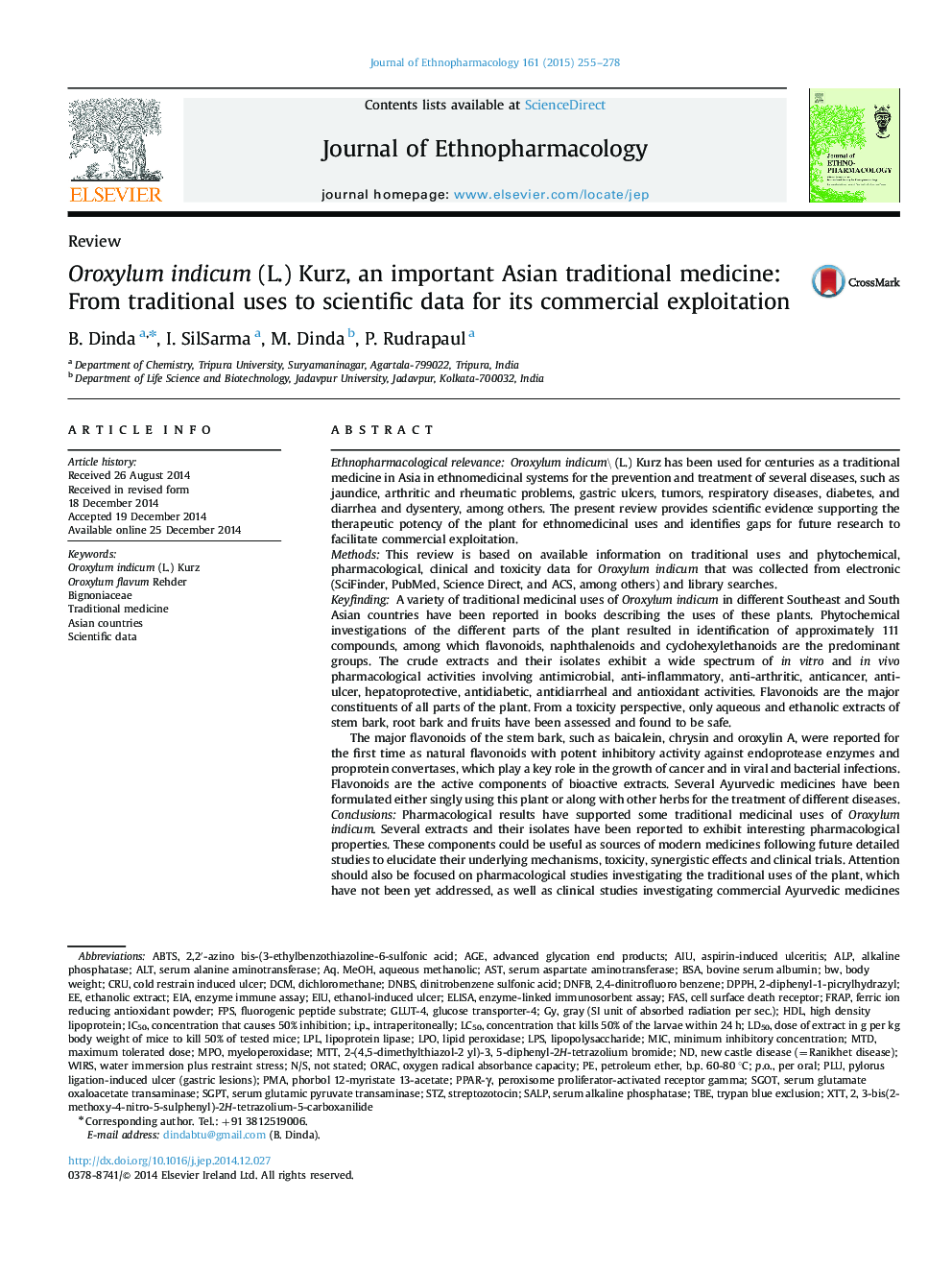| کد مقاله | کد نشریه | سال انتشار | مقاله انگلیسی | نسخه تمام متن |
|---|---|---|---|---|
| 5835540 | 1560401 | 2015 | 24 صفحه PDF | دانلود رایگان |

Ethnopharmacological relevanceOroxylum indicum\ (L.) Kurz has been used for centuries as a traditional medicine in Asia in ethnomedicinal systems for the prevention and treatment of several diseases, such as jaundice, arthritic and rheumatic problems, gastric ulcers, tumors, respiratory diseases, diabetes, and diarrhea and dysentery, among others. The present review provides scientific evidence supporting the therapeutic potency of the plant for ethnomedicinal uses and identifies gaps for future research to facilitate commercial exploitation.MethodsThis review is based on available information on traditional uses and phytochemical, pharmacological, clinical and toxicity data for Oroxylum indicum that was collected from electronic (SciFinder, PubMed, Science Direct, and ACS, among others) and library searches.KeyfindingA variety of traditional medicinal uses of Oroxylum indicum in different Southeast and South Asian countries have been reported in books describing the uses of these plants. Phytochemical investigations of the different parts of the plant resulted in identification of approximately 111 compounds, among which flavonoids, naphthalenoids and cyclohexylethanoids are the predominant groups. The crude extracts and their isolates exhibit a wide spectrum of in vitro and in vivo pharmacological activities involving antimicrobial, anti-inflammatory, anti-arthritic, anticancer, anti-ulcer, hepatoprotective, antidiabetic, antidiarrheal and antioxidant activities. Flavonoids are the major constituents of all parts of the plant. From a toxicity perspective, only aqueous and ethanolic extracts of stem bark, root bark and fruits have been assessed and found to be safe.The major flavonoids of the stem bark, such as baicalein, chrysin and oroxylin A, were reported for the first time as natural flavonoids with potent inhibitory activity against endoprotease enzymes and proprotein convertases, which play a key role in the growth of cancer and in viral and bacterial infections. Flavonoids are the active components of bioactive extracts. Several Ayurvedic medicines have been formulated either singly using this plant or along with other herbs for the treatment of different diseases.ConclusionsPharmacological results have supported some traditional medicinal uses of Oroxylum indicum. Several extracts and their isolates have been reported to exhibit interesting pharmacological properties. These components could be useful as sources of modern medicines following future detailed studies to elucidate their underlying mechanisms, toxicity, synergistic effects and clinical trials. Attention should also be focused on pharmacological studies investigating the traditional uses of the plant, which have not been yet addressed, as well as clinical studies investigating commercial Ayurvedic medicines and other ethnomedicinal preparations in human subjects based on this plant to confirm the safety and quality of the preparations.
265
Journal: Journal of Ethnopharmacology - Volume 161, 23 February 2015, Pages 255-278